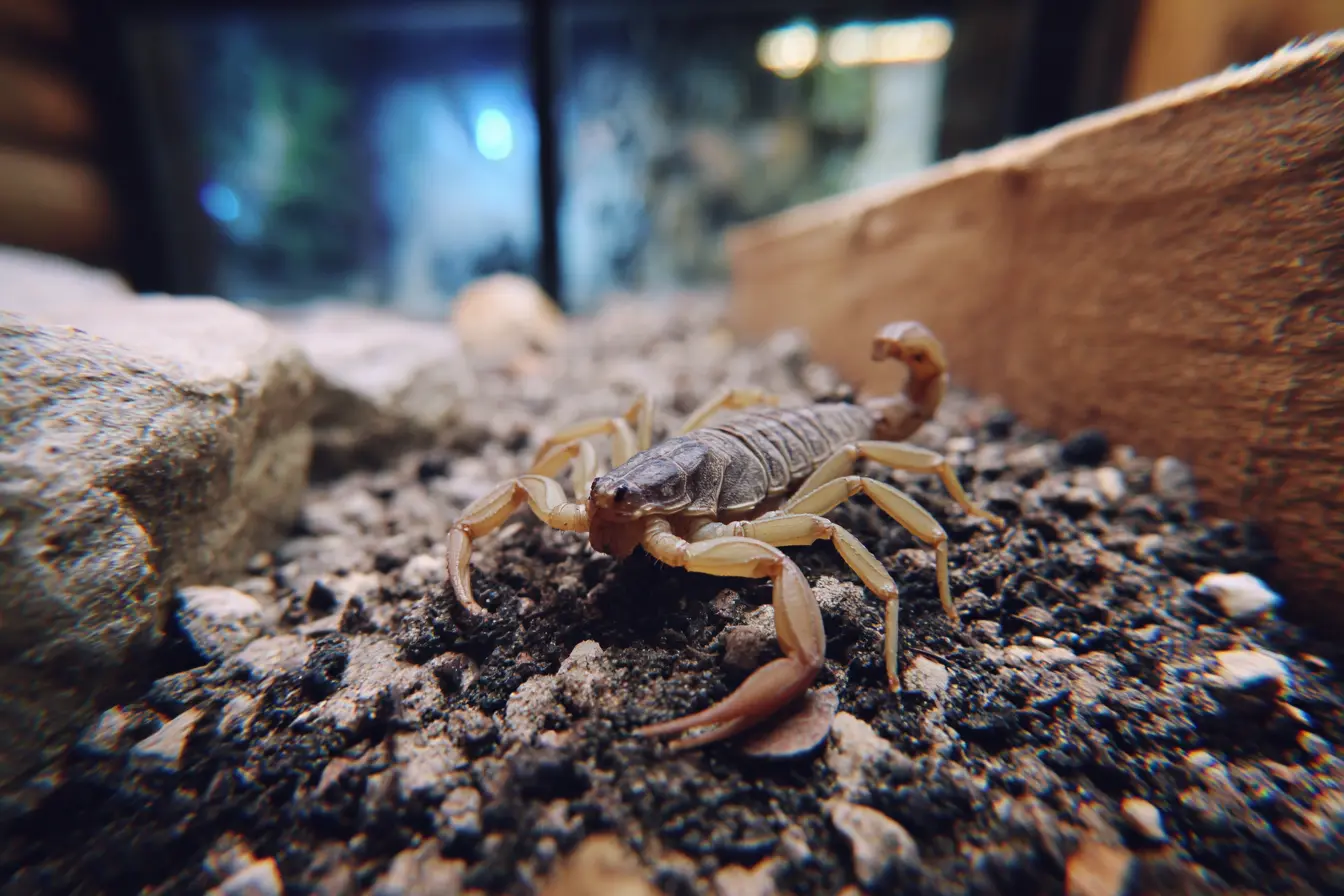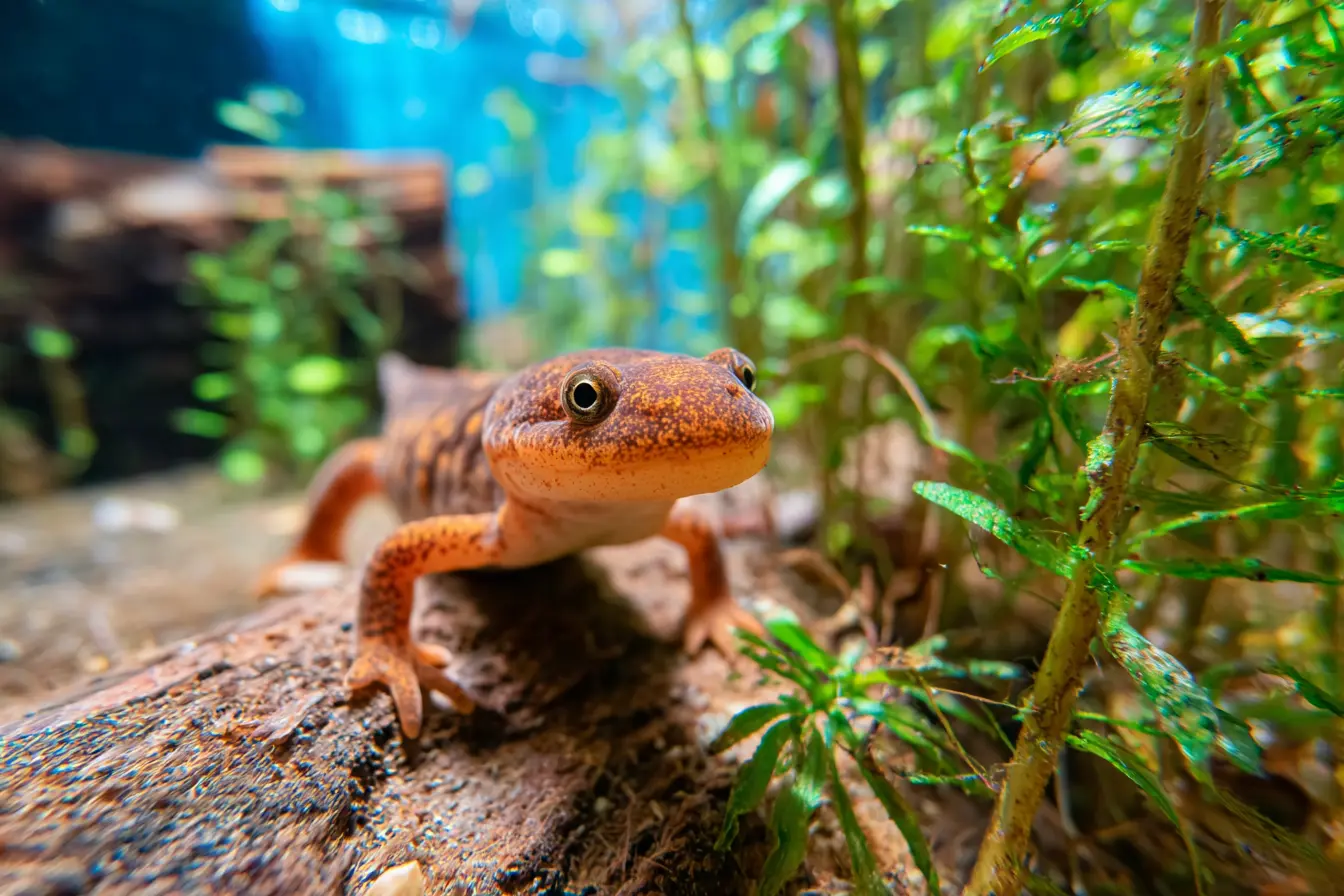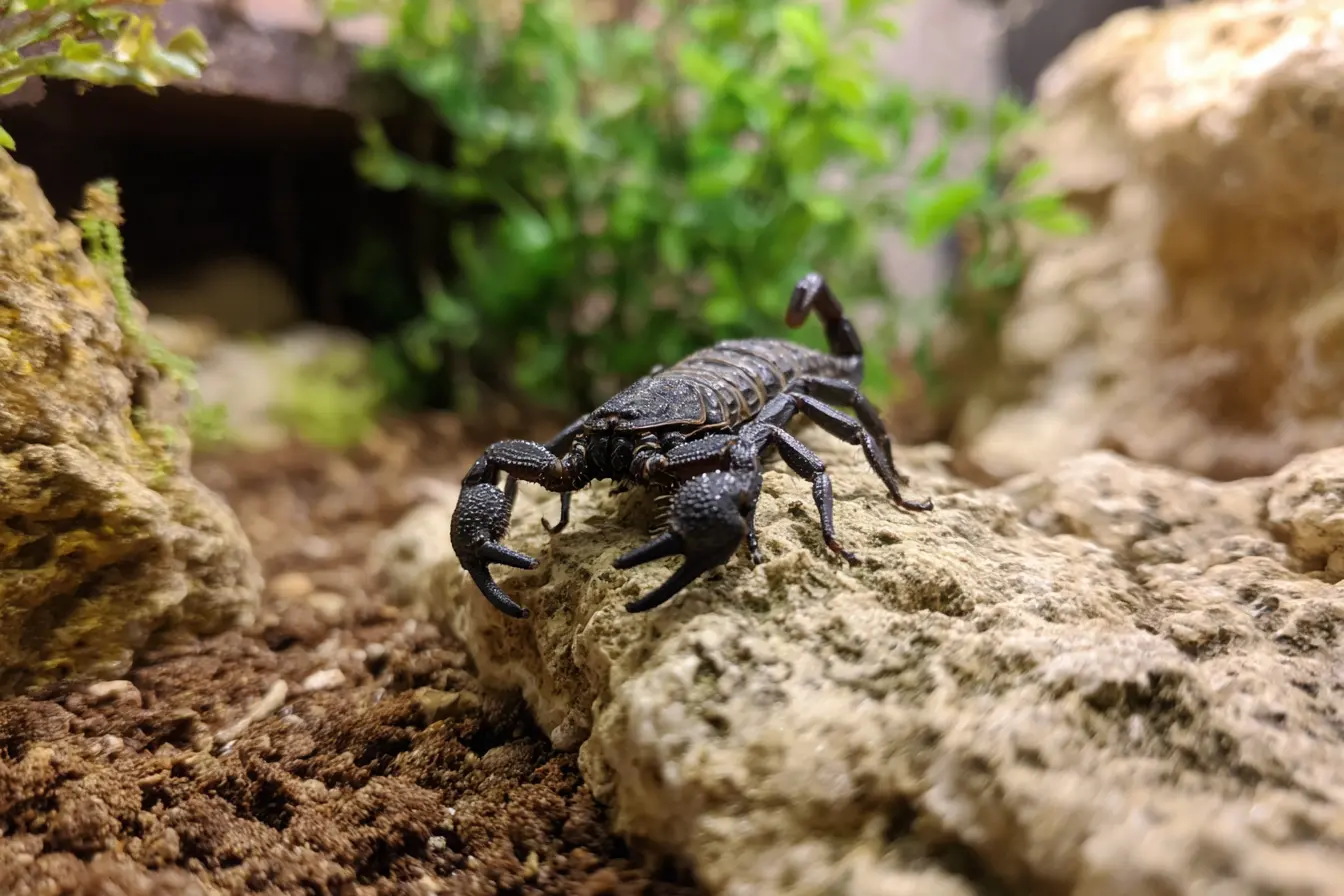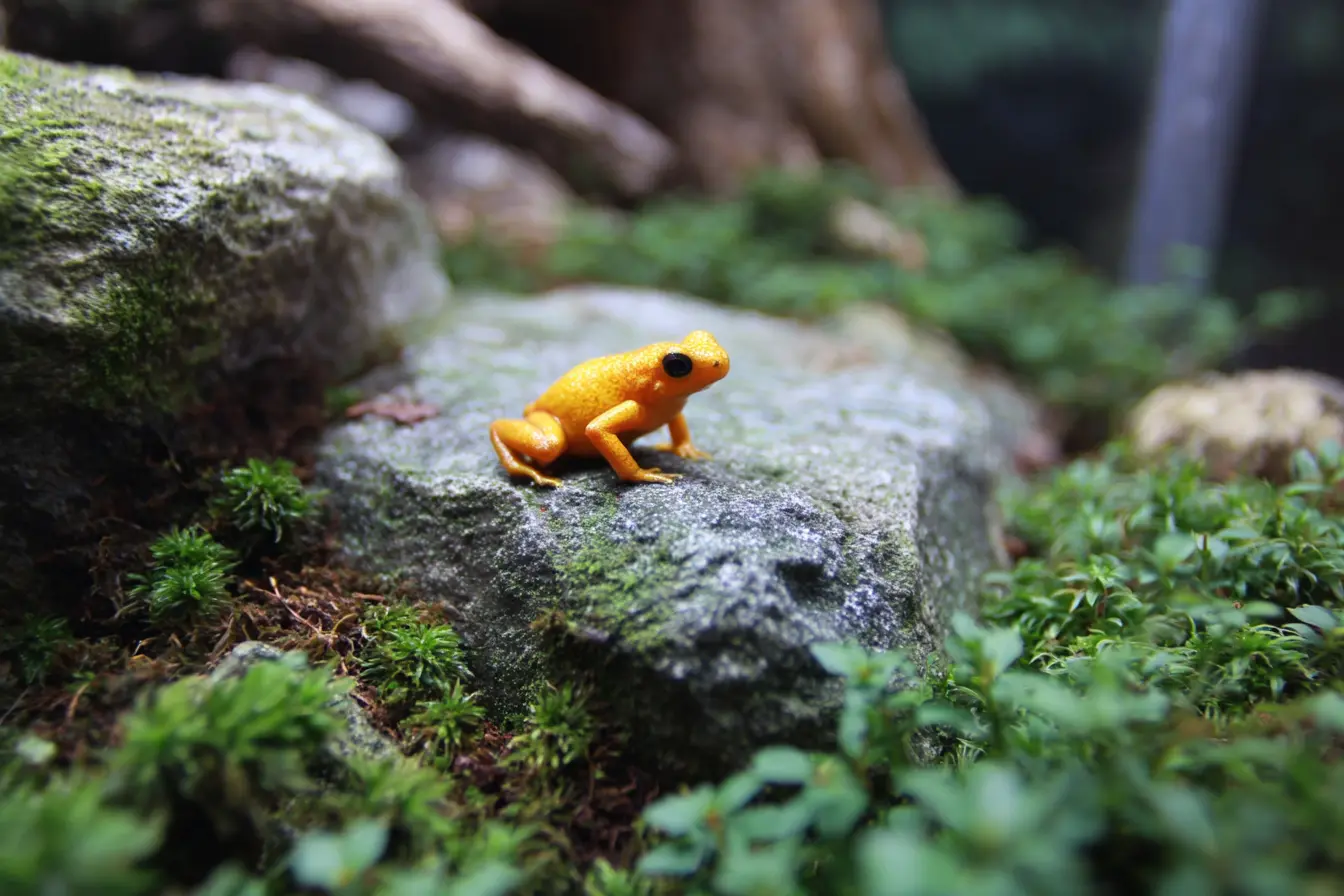
Keeping the Surinam Toad: A Comprehensive Guide
The Surinam toad (Pipa pipa) is one of the most bizarre and fascinating amphibians in the world. Native to the slow-moving freshwater rivers and swamps of South America, this fully aquatic species is best known for its unique reproductive method—females incubate their young in honeycomb-like chambers on their backs, where the toadlets develop until they emerge fully formed.
Their unusual appearance, flat bodies, and cryptic lifestyle make Surinam toads an exotic but challenging species to keep. This guide outlines everything you need to know to successfully care for Surinam toads in captivity.
Physical Characteristics
Size
- Adults typically reach 10–15 cm (4–6 inches) in length.
- Females are generally larger and broader than males.
Lifespan
- With proper care, Surinam toads can live 8–15 years in captivity.
Colouration and Body Shape
- They have a flattened, leaf-like body with a triangular head and small, lidless eyes.
- Skin is typically brownish or olive-grey, helping them blend into leaf litter and muddy water.
- The body is ridged and wart-like, enhancing their camouflage.
Sexual Dimorphism
- Females are larger with broader backs and a rounder abdomen.
- Males develop breeding pads (nuptial pads) on their forearms during the breeding season and have stronger forelimbs.
Legal and Ethical Considerations
Surinam toads are not commonly available in the pet trade and should only be purchased from reputable, captive-bred sources. Wild-caught individuals may carry parasites and are often stressed by captivity.
Because of their specialised needs, these toads are recommended only for experienced amphibian keepers or institutions focused on education or conservation.
Housing and Enclosure Setup
Surinam toads are fully aquatic and never leave the water. Their enclosure must reflect their natural habitat—slow-moving, shallow waters with dense vegetation and organic matter.
Tank Size
- A minimum of 75 litres (20 gallons) is recommended for a single adult.
- A 110-litre (30-gallon) or larger tank is preferable for a pair or more.
Water Depth and Structure
- Water depth should be 20–30 cm (8–12 inches).
- Provide a large horizontal swimming area with minimal vertical obstructions.
- Include live or artificial plants for cover, as well as pieces of driftwood or flat rocks.
- These toads prefer a still or very slow current.
Substrate
- A bare-bottom tank is easiest to maintain, but a layer of smooth river sand can be used for aesthetics.
- Avoid gravel or small particles that may be accidentally ingested.
Filtration and Water Quality
- Use a low-flow filter such as a sponge filter or a well-baffled canister filter.
- Water parameters:
- Temperature: 24–28°C (75–82°F)
- pH: 6.5–7.5
- Ammonia and Nitrite: 0 ppm
- Perform weekly partial water changes (25–50%).
- Use dechlorinated or conditioned water.
Lighting
- No special lighting is required.
- A dim ambient light or standard aquarium LED can help simulate a day-night cycle.
- Avoid strong lighting, as these toads prefer dim, shadowy environments.
Diet and Feeding
Surinam toads are opportunistic carnivores and ambush predators that rely on suction feeding.
Suitable Food Items
- Earthworms (excellent staple)
- Bloodworms (frozen or live)
- Blackworms
- Small feeder fish (use sparingly)
- Crickets (pre-killed and offered via tongs)
- Sinking carnivore pellets or amphibian-safe aquatic foods
Feeding Schedule
- Adults should be fed 2–3 times per week.
- Juveniles may require more frequent feeding (every 1–2 days).
- Remove uneaten food to maintain water quality.
Feeding Tips
- Feed directly near them with tongs or target feeding tools, as they may not notice food that floats by.
- They use sudden suction to draw prey into their mouths, so avoid fast-moving or overly large prey.
Handling and Behaviour
Surinam toads are best regarded as display animals due to their aquatic nature and sensitivity to handling.
Key Behaviours
- Spend most of their time motionless at the bottom of the tank.
- Use camouflaged coloration to remain hidden.
- Rarely swim unless disturbed or feeding.
- Can vocalise with low clicking sounds, especially during courtship.
Handling
- Avoid unless absolutely necessary.
- If handling is required (e.g., during tank cleaning), use soft, wet hands or a fine mesh net.
- Their skin is delicate and easily damaged.
Health and Common Issues
With proper conditions, Surinam toads are hardy, but they are sensitive to poor water quality and improper diets.
Common Health Problems
- Skin infections – Bacterial or fungal, often from dirty water or injuries.
- Bloating/dropsy – May indicate organ failure or internal infections.
- Parasites – Especially common in wild-caught specimens.
- Poor feeding response – Could stem from incorrect water parameters, overcrowding, or stress.
Preventative Care
- Maintain strict water quality.
- Quarantine any new individuals before introducing them.
- Feed a varied, high-quality diet.
- Avoid sharp tank decor or aggressive tankmates.
Breeding Surinam Toads
Breeding Surinam toads in captivity is rare and requires expert knowledge.
Reproductive Process
- Breeding is highly specialised and involves an elaborate underwater mating dance.
- The male clasps the female in amplexus and flips her upside-down repeatedly as she releases eggs.
- The eggs are embedded in the skin of her back, where they develop over several weeks.
- Fully-formed toadlets emerge from her back and swim away—no tadpole stage occurs.
Breeding Conditions
- Mimic rainy season conditions with cooler water changes and heavier misting (in setups that allow it).
- Provide ideal water quality and increased protein-rich feeding prior to breeding attempts.
- A separate breeding tank may be required to manage water conditions and protect offspring.
Conclusion
The Surinam toad is an extraordinary amphibian with unique biology and behaviour, but it is not a pet for everyone. Their fully aquatic lifestyle, delicate skin, and specialised breeding methods require precise care and attention. They are best kept by experienced amphibian enthusiasts, educators, or institutions aiming to highlight the diversity of life on Earth.
For those prepared to meet their needs, Surinam toads offer a truly one-of-a-kind experience—both eerie and awe-inspiring. Their leaf-like appearance, passive nature, and fascinating reproductive strategy make them a crown jewel in any amphibian collection.
Vets near you
Speciality vets
- Aquatics vet specialists
- Birds vet specialists
- Camelids vet specialists
- Cats vet specialists
- Cattle vet specialists
- Deer vet specialists
- Dogs vet specialists
- Equines vet specialists
- Exotic vet specialists
- Goats vet specialists
- Pigs vet specialists
- Poultry vet specialists
- Sheep vet specialists
- Small Mammals vet specialists
- Wild vet specialists



